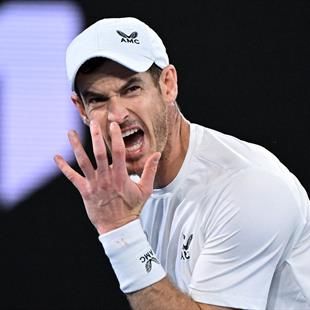Will 15-day move end late-night finishes at Australian Open? How ...

The four Grand Slams have traditionally been played over 14 days, but the Australian Open has now joined the French Open in adding on an extra day at the start.
But how exactly will the change impact the tournament and will late-night finishes now be a thing of the past?
What will change at a 15-day Australian Open?
The most significant change at next year’s Australian Open will be that first-round matches will be spread out across the first three days rather than two.
This has been done at the French Open since it added an extra day in 2006.
The addition of an extra day gives more flexibility to the schedule in its busiest period at the start of the tournament.
The new start time increases the number of sessions in the three show courts from 47 to 52.
There will also now be a minimum each day of two matches, down from three, on Rod Laver Arena and Margaret Court Arena.
Australian Open organisers say this is to “limit the potential of late finishes” as when the day sessions run late then the night sessions start later, and hence have the potential to finish later.
"I think the US Open went to playing two matches in the day session. That would stop the day matches running into the night session starting too late," Murray said.
"You'd still get quality matches during the day. The people who bought ground passes would get to see more of the top players, which would be excellent for them.
"If you did that, you could also potentially bring the night sessions slightly earlier. Those few hours, can make a difference to the players."
There have not yet been any plans announced to bring forward the night sessions, which started at 7pm in Melbourne this year.
Will the changes prevent late-night finishes?
One of the issues in trying to avoid late-night finishes is that tennis matches don’t have a clock so could last for an hour, or five hours.
But there are no curfews at the other Grand Slams, and the US Open has also seen several matches finishing in the early hours of the morning.
US Open tournament director Stacey Allaster said this year they had “talked about one match at night, but we felt that's not fair to our fans”.
The fans at the night sessions buy separate tickets to those who attend during the day, so might feel shortchanged if they only get to see one match, especially if it is one-sided or there is an injury.
But with two night matches scheduled there is always the worry that it will go past midnight.
And when matches run for nearly six hours, as the clash between Murray and Kokkinakis did, then it is almost unavoidable.
'Good on you, Andy!' - Wilander breaks down THAT point from Murray against Kokkinakis
An earlier start to night sessions could help, but Allaster said at the US Open that bringing the start time forward by an hour would make it hard for some fans to arrive on time. That could also be the case in Melbourne.
Former Australian tennis player Louise Pleming thinks the move to extend the Australian Open is “fantastic for all the players”.
“Of course, we all remember that match with Andy Murray and Thanasi, it's so hard for those guys,” she told ABC Melbourne.
"They finished at 4am in the morning and then they have to do press…they've not finished…they still have to do an hour of work.
“It's definitely a disadvantage for those players."
What have the Australian Open said?
Australian Open tournament director Craig Tiley: “We’ve listened to feedback from the players and fans and are excited to deliver a solution to minimise late finishes while continuing to provide a fair and equitable schedule on the stadium courts.
“The additional day will achieve this, benefiting scheduling for fans and players alike. The first round will now be played over three days instead of two, also giving fans an extra day of unbelievable tennis, entertainment, food and family fun.”





































































